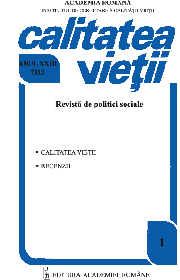Changes in social policies since the economic crisis. What is left of welfare after the austerity measures?
Changes in social policies since the economic crisis. What is left of welfare after the austerity measures?
Author(s): Ionuț-Marian AnghelSubject(s): Social Sciences
Published by: Editura Academiei Române
Keywords: austerity;social policies;public and social spending;economic crisis;economic growth model;
Summary/Abstract: Some scholars suggest that Romania, Estonia, Bulgaria, Latvia and Lithuania (REBLLs), have implemented one of the toughest austerity programs in Europe since 2010 (e.g. Blyth, 2013). I will argue, alongside other scholars, that the recent economic crisis these countries experienced was not caused only by an unregulated banking system, but also by their economic growth model. My focus will be more on Romania’s austerity program and its effects on various domains such as public and social spending, labor market policies, collective bargaining, education, and health. I will show that during the economic crisis, the neoliberal monetarist approach used by the IMF, known as the Polak model, used to redress the fiscal imbalances was blended with local policy decisions that overturn the relationship between labor and capital and placed the burden of economic recovery on the population. The article concludes that, while the problems were solved on the short run, the structural problems were not only left unaddressed, but many of them sharpened during and after the economic crisis.
Journal: Calitatea vieţii
- Issue Year: XXVII/2016
- Issue No: 3
- Page Range: 234-252
- Page Count: 18
- Language: English

